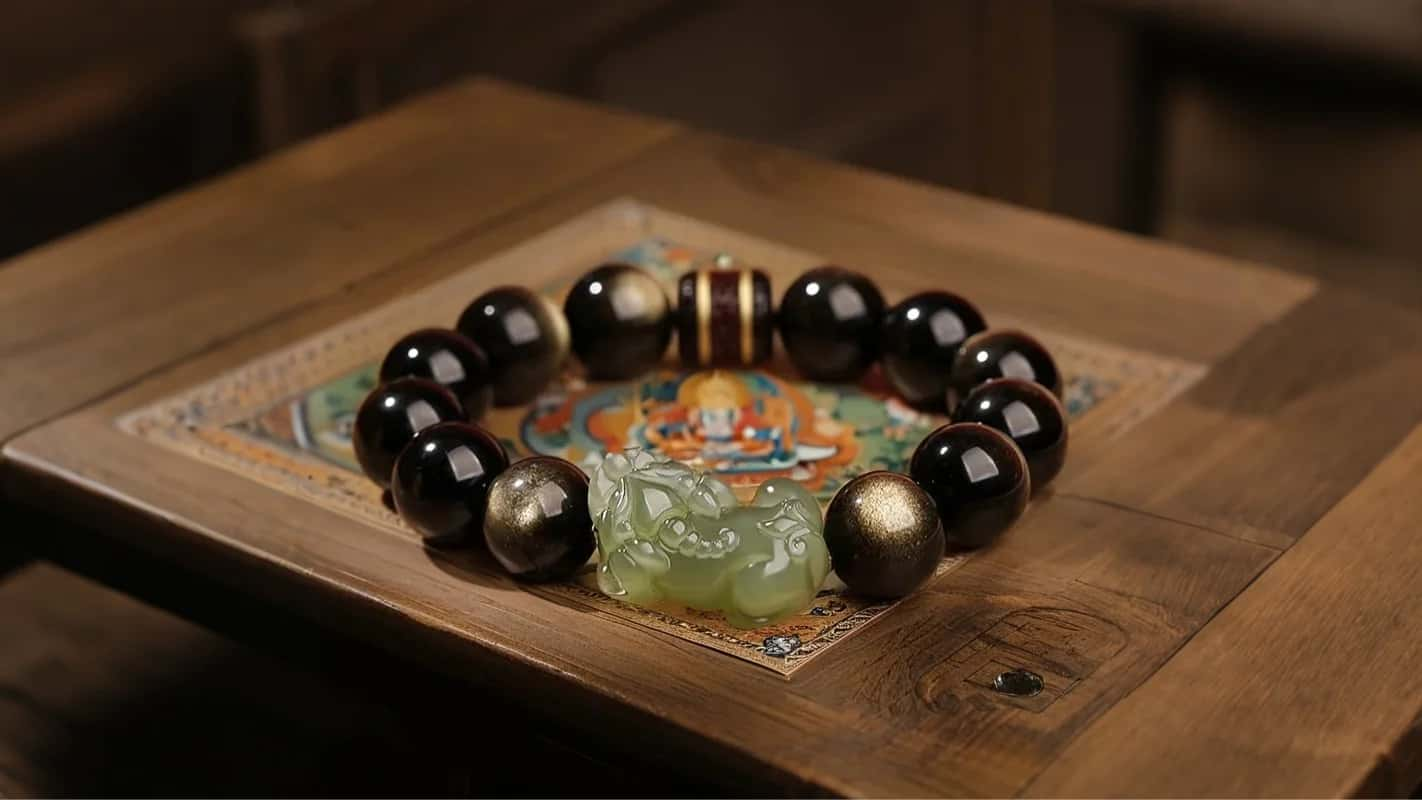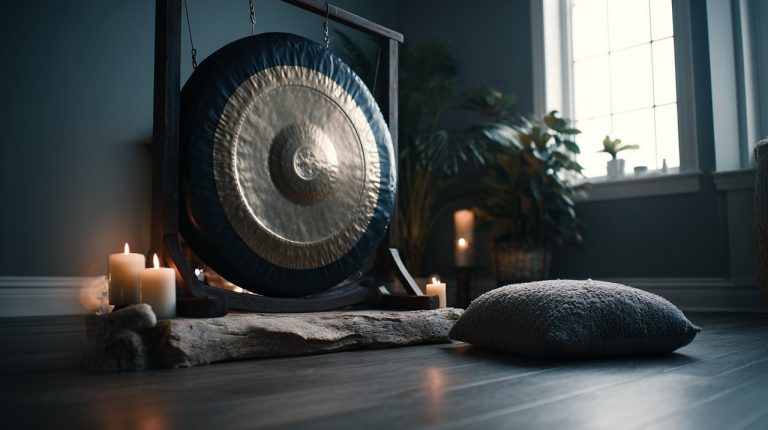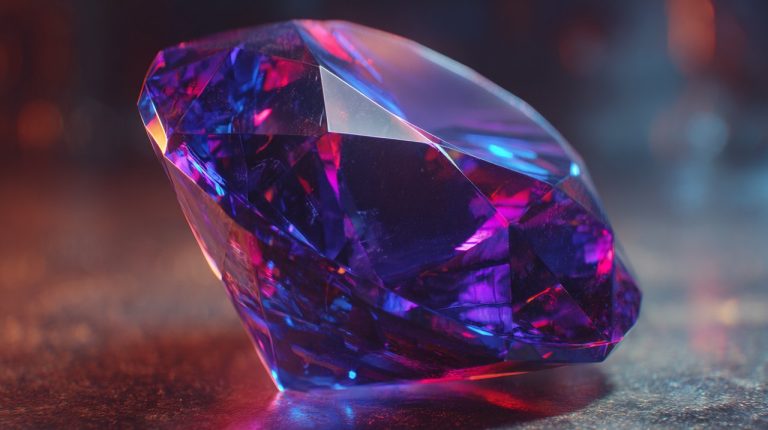How Much Is Obsidian Worth? Key Factors Affecting Its Price
From its raw, volcanic origins to dazzling, iridescent artworks, obsidian’s journey in value is as captivating as its deep, reflective surface. This striking difference in worth often sparks a natural curiosity: what truly determines the value of this enigmatic stone? It’s a question that goes far beyond simple economics. Instead, it weaves together geological wonders, intricate artistry, profound cultural significance, and the unique, personal impact obsidian has on our lives. Join us as we explore the factors that elevate this seemingly simple mineral into a powerful spiritual tool.
Understanding the Factors Affecting Obsidian’s Price
Obsidian, a natural glass born from rapidly cooling volcanic lava, doesn’t come with a fixed price tag. Instead, its market value is shaped by a complex interplay of elements. Understanding its true commercial worth requires a careful look at these core components. Let’s break them down.

Obsidian Varieties and Quality Assessment
Obsidian is far more than just a single black stone. It appears in a fascinating array of types, each with unique value propositions that captivate collectors and spiritual practitioners alike.
- Classic Obsidian: This is the most common form, admired for its deep black color and mirror-like polish. High-quality pieces show uniform color, free from visible impurities or distracting bubbles, reflecting light with pristine clarity.
- Rainbow Obsidian: This enchanting variety reveals a mesmerizing iridescent sheen—a spectral dance of colors that emerges under just the right light. This optical effect comes from microscopic inclusions of gas bubbles or mineral crystals, trapped within the rapidly cooled lava. Its value is directly tied to the intensity, clarity, and range of its iridescence. Top specimens show a full spectrum of vibrant hues that shift with every angle.
- Gold Sheen Obsidian: This type showcases a striking golden or silver luster, also due to internal microcrystals or bubbles. The more pronounced, uniform, and three-dimensional this golden effect appears, the higher its value. It truly gives the impression of molten gold trapped within the stone.
- Snowflake Obsidian: Easily recognized by its delicate white or gray spherical inclusions, which beautifully resemble freshly fallen snowflakes. Its value largely depends on the clarity, uniformity, and aesthetic appeal of these intricate patterns. They create a striking, beautiful contrast against the dark base.
- Mahogany Obsidian: This variety stands out with its rich reddish-brown streaks and swirls. It’s highly valued for its warm, earthy color combination, often reminding one of polished mahogany wood.
Beyond these specific types, assessing obsidian’s overall quality involves several other factors. These include its transparency (even though it’s generally opaque, thin edges might show a slight translucency), its luster, the clarity of any inclusions, and the absence of damaging cracks. Each of these elements contributes to the stone’s aesthetic beauty and energetic integrity.
Size, Shape, and Craftsmanship: Direct Reflections of Obsidian’s Price
- Size: Generally, the larger the piece of obsidian, the higher its price. This isn’t just about rarity. Larger specimens are also more challenging to source and require greater skill and material to create substantial, complex pieces. For example, a piece that’s just 50% larger might see its value double or even triple, reflecting the exponential increase in sourcing difficulty and processing risks.
- Shape: Obsidian’s form significantly impacts its value. Whether it’s rough stones, chips, meticulously carved spheres, pyramids, delicate pendants, or precisely cut bracelet beads, each shape demands different processing difficulty and material usage. Crafting a perfect polished obsidian sphere, for instance, requires a substantial amount of raw material and meticulous grinding, often resulting in significant material waste and specialized labor.
- Craftsmanship: The level of detail in carving, the quality of polishing, and the geometric precision of cutting are paramount. A master artisan, for example, can create meticulously hand-carved obsidian sculptures that command prices thousands of times the raw material cost. Their signature, intricate details and months of dedicated labor transform a simple stone into an irreplaceable work of art. Here, the artistry itself becomes the primary driver of value, transforming material into a lasting legacy.
Origin and Rarity: Unseen Value Drivers
Obsidian is found across the globe, with significant sources in Mexico, the United States (Oregon and California), Iceland, and Japan. Mexico, for instance, is especially known for its high-quality rainbow and gold sheen obsidian.
But origin isn’t just about location. Certain sources can dramatically enhance a stone’s collectible value due to unique colors, distinct luster, or profound historical and cultural significance. Take the legendary “Apache Tears” obsidian, found primarily in the American Southwest. This variety carries a rich historical narrative tied to indigenous folklore, boosting its collectible appeal far beyond its geological uniqueness. Similarly, the rarity of specific formations or colors from certain geological sites can drive prices exponentially higher, making these specimens highly coveted by collectors.
Obsidian’s Market Value and Brand Premiums
Like any other commodity, obsidian’s market price is heavily influenced by supply and demand. When a particular type or quality is highly sought after, its price naturally rises.
Furthermore, well-known brands often command a premium. This is especially true for those with unique designs and a strong ethical sourcing philosophy. Their established brand value, distinctive design approach, and excellent customer service all contribute to this premium, reflecting trust and perceived excellence.
Beyond Monetary Value: Obsidian’s Profound Significance
However, the true value of obsidian—a stone born of fire and earth—often transcends mere market prices. When we look beyond its commercial aspects, we uncover the profound spiritual and energetic qualities that have resonated with humanity for millennia. It’s not simply a stone; it’s considered a powerful tool for self-exploration, energetic protection, and spiritual healing. It resonates deeply with the human spirit, acting as a silent, ancient guide.
The Healing Properties of Obsidian: Alleviating Stress and Negative Emotions
As a highly regarded healing crystal, obsidian is renowned for its potent, grounding energy. Many believe it assists individuals in navigating the complexities of their inner world, offering both solace and strength.
- Absorbing Negative Energy: Obsidian is often called an “energy vacuum cleaner.” It’s believed to diligently absorb negative emotions, stress, and psychic debris from the environment, helping to purify and stabilize one’s aura.
- Releasing Old Wounds: This stone acts as a compassionate yet firm guide, gently encouraging us to confront deeply buried emotional wounds and self-limiting patterns. This profound process, often known as “shadow work” in psychology, is essential for truly transformative emotional purification and radical self-discovery, paving the way for deep healing.
- Enhancing Inner Strength: When facing life’s inevitable challenges, obsidian offers unwavering support. It helps us maintain calm and clarity, fostering a resilient spirit capable of enduring and overcoming adversity. This connection to the Earth’s core energy can be deeply stabilizing, much like finding solid ground amidst a storm.
In energy healing practices, for example, obsidian is often strategically placed on specific chakra points, particularly the root chakra. This helps to unblock stagnant energy and promote physical and emotional balance. Its potent energy can offer a direct pathway to emotional freedom and energetic realignment.
Protective Energy: Obsidian’s Ancient Defense Mechanism and Modern Applications
Obsidian is also widely regarded as an exceptional protective stone—a silent guardian against unseen forces. Its formidable protective qualities manifest in several key ways, echoing its use in ancient civilizations:
- Defending Against Negative Influences: Many believe it forges an impenetrable energetic barrier around the user, effectively blocking malice, jealousy, or any form of negative psychic attack. This protective quality draws parallels to its historical use as a sharp tool for defense.
- Revealing Deception: Known as the “stone of truth,” obsidian has a unique ability to help individuals see through facades and discern falsehoods. This attribute comes from its mirror-like quality, which symbolically reflects hidden motives and illuminates obscured truths. It protects by revealing what is truly present. In ancient Mesoamerican cultures, polished obsidian mirrors were even used for divination and contacting other realms, underscoring its role in revealing deeper truths.
- Purifying Spaces: Strategically placing obsidian in homes or workplaces can energetically purify the environment, creating a safer and more harmonious atmosphere. Many people position obsidian spheres or pyramids at entry points, acting as vigilant guardians to prevent negative energy from permeating the space.
Meditation Companion: The Experience of Natural Obsidian
For meditators, natural obsidian stones offer a unique and profound tool for deep connection and introspection, serving as a gateway to inner realms.
- Deep Grounding: The substantial weight and profound black color of obsidian intrinsically help anchor your awareness in the present moment. This grounding quality prevents thoughts from aimlessly wandering, allowing for a deeper meditative experience rooted firmly in the Earth’s stabilizing energy.
- Shadow Work: Obsidian’s strikingly reflective surface serves as a potent symbolic mirror. It’s an invitation for meditators to bravely confront their inner shadows, unacknowledged fears, and unresolved issues. This “shadow work” is more than just introspection; it’s a courageous journey towards radical self-acceptance and comprehensive awareness.
As you hold this ancient glass, you might ask: What truths is my own reflection waiting to reveal?
- Enhancing Intuition: Holding or gently gazing at obsidian during meditation can significantly enhance intuition and insight. This practice often leads to clearer realizations and a deeper, more profound connection to your inherent inner wisdom, guiding your path to self-understanding.
Obsidian’s Price Factors: Buying Suggestions and Valuation
Understanding the multifaceted value of obsidian ultimately translates into making informed purchasing decisions. Knowing the approximate price ranges and practical buying suggestions below can significantly assist you in acquiring authentic and valuable pieces.
Common Obsidian Jewelry Price References
Here are some approximate price ranges for common obsidian jewelry, serving as a general reference. Keep in mind that actual prices can vary due to market fluctuations, individual sellers, and the precise quality of the obsidian:
- Small Tumbled Stones/Chips: Typically range from a few to several dollars each, perfect for beginners or small collections.
- Standard Obsidian Bracelets (8-12mm beads): Generally priced between $7 and $45, depending on bead size, finish, and any additional charms.
- Standard Obsidian Pendants/Amulets: Range from $12 to $75, influenced by size, the intricacy of simple carvings, and the type of metal used for settings.
- Standard Obsidian Spheres (3-5 cm in diameter): Usually fall within the $15 to $60 bracket. Larger or more perfectly formed spheres will command higher prices.
Valuation of High-Quality or Special Obsidian
- High-Quality Rainbow or Gold Sheen Obsidian Jewelry: If the iridescent or golden effect is prominent, complete, and exceptionally rare, prices can climb to hundreds or even thousands of dollars. For example, a clear, richly colored, and flawless rainbow obsidian bracelet can easily exceed $150, reflecting its unique optical beauty.
- Master-Level Sculptural Artwork: Sculptures created by renowned artisans, featuring exquisite craftsmanship and unique thematic expressions, can be valued at tens of thousands of dollars or more. These pieces are akin to fine art collectibles, where the artist’s vision and skill are paramount, rather than ordinary jewelry.
How to Avoid Purchasing Poor Quality or Imitation Obsidian
When investing in obsidian, it’s essential to exercise caution to avoid purchasing inferior products or imitations. Consider these crucial tips:
- Observe Luster and Texture: Natural obsidian typically has a distinct glassy luster, a remarkably smooth surface, and feels cool and substantial to the touch due to its density. Imitation glass, conversely, might feel lighter or have a more plastic-like texture.
- Inspect the Interior: Authentic natural obsidian may contain natural bubbles or subtle flow patterns, which are inherent features of its volcanic glass formation. However, these are usually subtle and irregular. If you see numerous bubbles distributed uniformly, it’s a strong indicator of artificial glass.
- Identify Color and Sheen: Pure black obsidian should be a deep, uniform black without any mottling. The iridescence of rainbow and gold sheen obsidian should be naturally formed. It should appear under specific lighting conditions and shift dynamically with angles, rather than presenting as fixed, painted patterns.
- Inquire About Origin and Certification: Always ask sellers about the precise obsidian sources. Prioritize those who can provide certification from authoritative gemological institutions, verifying authenticity and origin.
- Select Reputable Sellers: It is paramount to purchase natural crystal gems from reputable and knowledgeable sellers who specialize in authentic geological specimens. Their expertise and integrity are your best safeguards against counterfeits.
Beyond Price: The Enduring Meanings Obsidian Brings to Life
Ultimately, the answer to ‘What is obsidian truly worth?’ should not just be about its monetary price. The profound value of obsidian lies in how it seamlessly integrates into our lives. It transforms from a mere geological specimen into a potent symbol of our growth, resilience, and a steadfast touchstone for inner wisdom. It represents a dialogue between the Earth’s raw power and our own spiritual journey.
The Symbolic Significance of Obsidian: Facing Challenges and Self-Transformation
Formed from molten volcanic lava that cools instantaneously, obsidian’s unique genesis imbues it with powerful and resonant symbolic meanings. It perfectly reflects its journey from chaos to clarity:
- Resilience and Endurance: It embodies the tenacity forged in extreme environments. It serves as a powerful reminder to maintain strength and composure amidst life’s fiery trials. Like the lava that withstands immense pressure, obsidian teaches us to endure.
- Truth and Insight: Its deep, strikingly reflective surface acts like an ancient mirror. It encourages us to confront profound truths—whether about the external world or the deepest facets of our inner selves. It symbolizes the ability to pierce through illusion and see the essence of situations, much like the polished obsidian scrying mirrors used by ancient civilizations for divination and profound insight.
- Transformation and Rebirth: From raw lava to polished stone, obsidian symbolizes profound transformation. It aids in clearing old patterns and negative energy, paving the way for new beginnings and accelerated personal growth. It truly embodies the cycle of destruction and creation.
Incorporating Obsidian into Daily Life: A Philosophy for Enhancing Well-being
Whether you choose to wear obsidian as a protective shield or place a meditation stone by your bedside, obsidian can subtly yet profoundly influence your daily life. It serves as a constant reminder that facing darkness and challenges is an indispensable part of growth. It encourages courageous self-reflection, helping to clear obstacles on your path. And it connects you with the Earth’s raw, grounding energy, providing an invaluable sense of calmness and security.
Ultimately, obsidian is far more than just a piece of jewelry or decoration. It embodies a life philosophy that affirms our inner strength and potential for profound transformation, guiding us toward a more integrated and empowered existence.
Now, equipped with a deeper understanding of obsidian’s multifaceted value—from its intricate market dynamics to its profound energetic properties—you are empowered to make truly informed choices. Whether you seek a black obsidian pendant for powerful protection or a natural obsidian meditation stone to deepen your practice, you’ll know what to look for. For further insights into its care and how to get the most from your stone, consider exploring comprehensive guides on daily cleansing and energy activation for obsidian.
💡 Frequently Asked Questions
The value of obsidian is determined by a complex array of factors including its type and quality (e.g., iridescence, uniformity, lack of impurities), size, shape, craftsmanship, origin and rarity, and market supply and demand.
The article mentions several types: common obsidian (deep black), Rainbow Obsidian (iridescent sheen), Gold Sheen Obsidian (golden/silver sheen), Snowflake Obsidian (white or gray spherical inclusions), and Mahogany Obsidian (reddish-brown streaks).
Obsidian is valued for its spiritual and energetic properties. It is believed to absorb negative energy, help release old wounds, enhance inner strength, provide protection against negative influences, purify spaces, and serve as a meditation companion for deep grounding and enhancing intuition.
To avoid purchasing poor quality or imitation obsidian, observe its glassy luster, smooth surface, and cool, heavy feel. Inspect the interior for natural bubbles or flow patterns (avoiding numerous uniform bubbles), verify that iridescence or sheen appears naturally and changes with angles, inquire about its origin and certification, and always purchase from reputable sellers.







